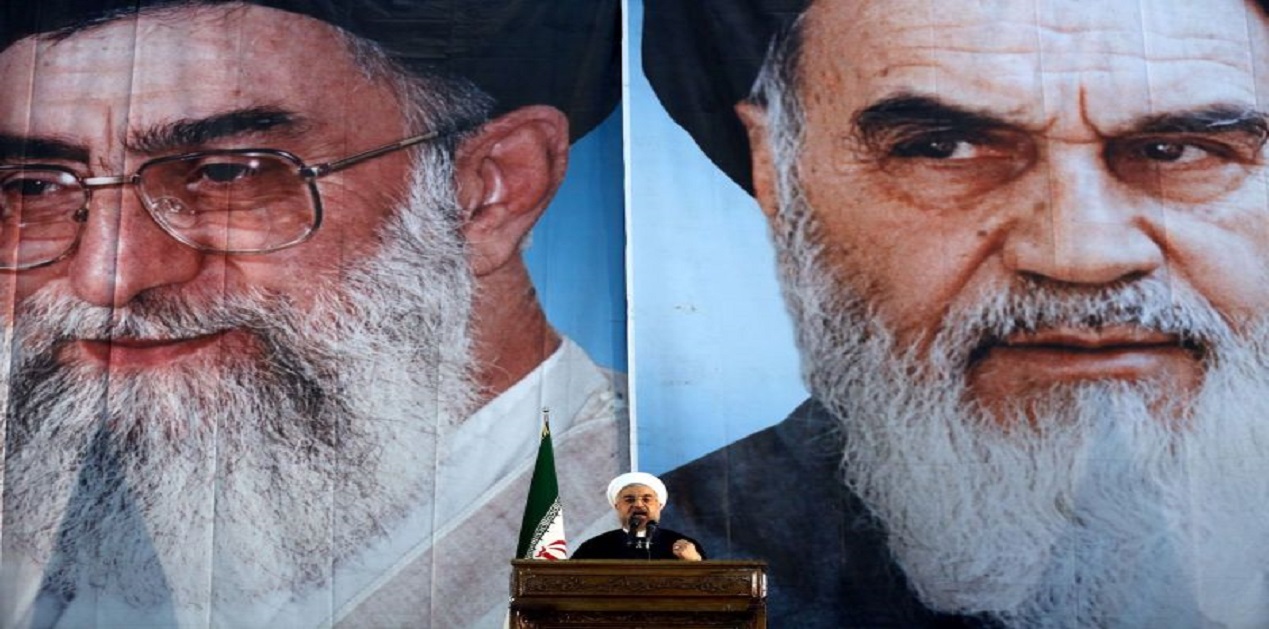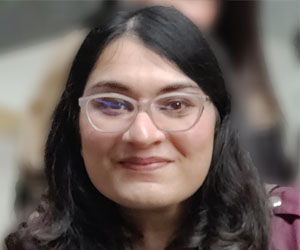The internal political dynamics in Iran are divided into three blocs namely the clergy, the technocracy and the military and security forces. The interplay between the three blocs into the clergy-military; military-technocrat and clergy-technocrat alliances which hold distinct political, social, cultural and economic orientations is critical for understanding the Iranian political system.1 In terms of political parties, there are around 250 parties which however, lack disciplined party membership and party platforms and the individual members often shift their allegiances between the Principlists or hardliners and reformists or moderates. 2 In this context, the Guardian Council comprising of six experts of Islamic law and six experts of constitutional law is responsible for qualifying candidates in local, parliamentary, presidential and Assembly of Experts elections besides approving legislation passed by the parliament and supervising elections. 3 The Council has traditionally favoured conservative or hardliner candidates that have limited the political space for reformists in Iran.
During the 1980s, under the Presidency of Sayyid Ali Hosseini Khamenei who became the Supreme Leader in 1989, the clergy-military nexus occupied the dominant position. It witnessed a shift through the surge of the technocratic class at the expense of the military during the tenure of President Akbar Hashemi Rafsanjani between 1989 and 1997 and President Mohammad Khatami between 1997 and 2005. The military and the technocrats formed the political base under hardliner President Mahmoud Ahmedinejad between 2005 and 2013. 4 President Hasan Rouhani’s regime is marked by a tussle between the hawkish, interventionist posture of the Iranian Revolutionary Guards Corp. (IRGC) and President’s efforts for reconciliation, democratic reforms and integration with the global economy.
The Supreme Leader is more inclined towards the clergy-military alliance that plays a significant role in defining Iran’s strategic behaviour. He is, however, cognizant of the opinions of the majority of Iranians who favour a more moderate stance to seek reconciliation with the west, greater political, civil and social liberties and greater integration with the global economy.5 President Rouhani, Javad Zarif and his foreign policy team negotiated the 2015 Joint Comprehensive Plan of Action (JCPOA) hoping for the removal of sanctions and revival of the economy. The hardliners coming largely from the military and the clergy consider the nuclear programme essential to the regime’s survival and after the signing of the nuclear deal, it remained sceptical with regard to the US’ sincerity in upholding the agreement such as the complete lifting of sanctions.6
The JCPOA removed sanctions pertaining to the nuclear deal, however, sanctions over Iran’s ballistic missile programme, accusations of sponsoring terrorism and human rights abuses continued.7 The removal of sanctions post-JCPOA brought promising signs of economic recovery with GDP growth rate at 12.3 percent largely from the oil and gas sector in 2016.8 The Iranian economic system besides sanctions is rife with mismanagement and the GDP growth rate fell to 3.8 percent in 2017.9 The poor economic growth frustrated the Iranians that led to protests in December 2017 and early 2018 against unemployment, inflation, crumbling of social security measures etc. There were reports of protestors denouncing the Supreme Leader and chanting in support of the erstwhile Shah which were worrying signs for the political elites. The initial spark of the protest was reportedly ignited by the hardliners to undermine Hasan Rouhani and his reformist agenda.10
The US withdrawal from JCPOA in May 2018 and re-imposition of sanctions resulted in decline of its oil exports and economic growth. The GDP growth rate was at negative 4.8 percent in 2018 which further decreased to negative 9.5 percent in 2019. The rate of unemployment also increased from 14.5 percent in 2018 to 16.8 percent in 2019. According to the Organization of the Petroleum Exporting Countries (OPEC), oil exports were at 2.3 million barrel per day in early 2018 which dropped to 1 million barrel per day in April 2019. The Statistical Centre of Iran noted that Consumer Price Index (CPI) 12-month rate of inflation for households was at 42 percent in October 2019.11
The US withdrawal from the nuclear deal has increased the political weight of the hardliners and the political infighting within the regime grew in early 2019. On 25 February 2019, Iranian Foreign Minister Javad Zarif announced his resignation after facing pressures from the hardliners who critiqued his assessment of the US’ intentions. The resignation was however turned down.12 Rouhani and the moderates have favoured the policy of strategic patience by preserving ties with European states in light of the US’ maximum pressure strategy and insisted on a less aggressive foreign policy which could integrate with the global economy and introduce domestic reforms.13
Tilt Towards a Pro-active Strategic policy in 2019
The hardliners have emphasised on strategic and psychological confrontation with the US such as expanding its strategic influence by arming and training proxy groups and militias in Iraq, Syria, Lebanon and Yemen; controlled escalation; conceive tensions affecting oil networks and violations of uranium enrichment levels since May 2019. In July 2019, the Uranium level was increased to 4.5 percent surpassing the 3.67 percent limit and exceeded 300 kg cap set by the JCPOA.14 On 5 January 2020, Iran announced that it would remove the limits placed on the number of centrifuges in operation.15
There were series of attacks on tankers in the Persian Gulf region in 2019 which were reminiscent of 1980s Iran-Iraq tanker wars. On 12 May 2019, four tankers were attacked off the coast of Fujairah. Two tankers including a Japanese tanker were attacked in the Gulf of Oman during the visit of Japanese Prime Minister Shinzo Abe on 13 June 2019. On 4 July 2019, British Overseas Territory of Gibraltar intercepted a tanker, Grace I carrying Iranian oil to Syria. IRGC responded by capturing a British tanker, Stena Impero on 19 July 2019 in the Strait of Hormuz. Besides, maritime oil networks, oil pipelines and refineries in Saudi Arabia were attacked by the Houthi movement allegedly backed by Iran. These attacks were carried out to disrupt the oil networks; however, it would be unfair to lay the blame singularly on Iran. The timing of the attack on Japanese tanker during their Prime Minister’s visit as well as reports of the US bribing an Indian captain, Akhilesh Kumar to seize an Iranian tanker, Adrian Darya I may point towards some US complicity in these incidents. 16
There were incidents of controlled escalation and brinkmanship; however, these instances did not translate into a full-fledged conflict. On 19 May 2019, one rocket crashed near the US embassy in Baghdad. The US President Donald Trump directly threatened Iran responding, “If Iran wants to fight, that will be the official end of Iran…...”17 On 20 June 2019, Iran shot down a US drone. Trump tweeted that after an initial plan to attack, he decided to renege in order to save 150 casualties.18 Iran in August 2019 inducted locally built Bavar-373 mobile surface-air missile19 and on 8 November 2019, it struck down one more drone. The US, however, denied Iranian claim regarding shooting down of the drone.20 Furthermore, the US on 4 December 2019 announced that it has captured a boat in the Arabian Sea carrying advanced missile components linked to Iran.21
The military-clergy nexus in Iran perceive themselves as the true upholders of the spirit of the Islamic Revolution. According to them, spreading the spirit of resistance around the region is a crucial component of the Islamic Republic’s ideological foundation. Iran has justified the support to numerous militias in Iraq, Syria and Lebanon as spreading the spirit of the revolution. The proxy groups such as Hezbollah in Lebanon, Iraqi and Syrian militia groups and Houthis in Yemen based on their asymmetrical techniques and training have emerged as significant sub-conventional assets for the IRGC to expand Iran’s strategic footprint or the so-called Shia Crescent across Iraq, Syria and Lebanon touching the Mediterranean coast. One of the major planners of Iran’s strategic outreach policy was General Qassim Soleimani, the Chief of the Quds Force, the specialised military intelligence and extraterritorial operations unit of IRGC.
The Killing of Soleimani and its Regional and Domestic Impact
General Soleimani joined the army during the revolutionary period and participated in the 1980-1988 Iran-Iraq war. Soleimani became the head of Quds Force unit in 1998 and under his tutelage, the force sharpened its capabilities in intelligence, training and technical spheres and strengthened strategic ties with Hezbollah, Syrian President Bashar Al Assad’s security forces, Badr Organisation, Iraqi Prime Ministers Ibrahim al-Jaafari and Nouri-al-Maliki.22 Soleimani’s tactics were crucial in defeating Islamic State (IS) in Iraq as well as Syria. In Iraq, Hashd al-Shaabi or Popular Mobilisation Forces (PMF) was Iran’s tactical partner in the fight against IS. The Iraqi Shiite paramilitary group and an offshoot of PMF, Kataeb Hezbollah on 27 December 2019 launched a rocket attack on Iraqi military base in Kirkuk killing an American contractor, Nawres Hamid. 23 The US retaliated by striking Kataeb Hezbollah’s bases in Iraq and Syria killing 25 fighters on 29 December 2019.24
The Iraqis in a display of outrage against violations of sovereignty stormed inside the US embassy in Baghdad on 31 December 2019.25 General Soleimani was blamed for orchestrating the attack and on 3 January 2020; the US with the help of Israeli intelligence killed Soleimani and Abu Mahdi al-Muhandis, the commander of PMF.26 The PMF in the post-IS setting has emerged as an Iraqi government-sanctioned counter-insurgency paramilitary unit. Iran on 8 January 2020 retaliated against the US strike by launching 22 surface-to-surface missiles at two US military bases in Ain al-Asad base in Anbar province and one facility in Erbil, the capital of Iraqi Kurdistan.27
The US military reportedly utilised intelligence through satellites, signals and communications intercepts and radar system to track the missiles offering time for the security personnel to find shelter. Several commentators have opined that Iran’s strikes were precise in hitting seven buildings in Ain al-Asad airbase however, it deliberately missed killing US military personnel to avoid an all-out war. It was essentially an act of intimidation or sending a message and a way to pacify the domestic audience rather than directly provoking a war.28
However, during the missile attack, Iranian security forces accidentally shot down a Ukrainian International Airlines PS752 heading for Kyiv killing 176 people. The initial denial and finally acceptance of guilt over the incident has enraged public opinion within Iran and re-ignited protests that have overwhelmed the state since November 2019.29 The rise in petrol price served as a trigger to express the multitude of political and economic hardships such as inflation in prices, unemployment, poverty etc. and demonstrations quickly escalated to demand regime change. The government adopted harsh measures and according to Amnesty International, around 304 people have died due to actions of the security forces.30 Western commentators were quick to point out the success of President Trump’s maximum pressure strategy. Presently, the protestors are demanding trial of the culprits and questions have been raised over the preparedness of the security forces that took extreme measures to ensure the absence of casualties of US troops while discounting the security measures at crucial sites such as airports. The forthcoming Parliamentay elections to be held on 21st of February 2020 would be a litmust test for President Rouhani’s reformist agenda.
Conclusion
It is going to be a testing time for the regime to contain the domestic aspirations as well as undergo the tussle between the moderates seeking for a less militaristic approach to foreign policy and a dominant clergy-military hardliners nexus which has remained sceptical of engagement with the west and intends to preserve conservative socio-cultural outlook. Both sides in the interest of relative stability may agree on strategic patience for the time being and cautiously wait for the outcome of 2020 US elections.
The continuing tensions between Iran and the US have significant strategic implications for India. From India’s perspective, unlike its converging interests with the US in the Indo-Pacific region, the strategic objectives do not align in the West Asian region and it has favoured de-escalation in order to secure the oil links in the Persian Gulf region; re-opening of oil trade from Iran as well as continuing its strategic engagement especially in the development of Chahbahar port.
References:
- Golkar, S. “Iran's election: It's not about moderates or hardliners.” Al Jazeera. April 24, 2017. Accessed January 13, 2020. https://www.aljazeera.com/indepth/opinion/2017/04/iran-election-moderates-hardliners-170421070907270.html
- Reuters. “Factbox: Parties and politics in Iran's parliamentary election.” Reuters. February 18, 2016. Accessed January 13, 2020. https://www.reuters.com/article/us-iran-election-parliament-factbox-idUSKCN0VR0QI
- Iran Data Portal. “The Guardian Council.” Iran Data Portal. 2019. Accessed January 15, 2020. https://irandataportal.syr.edu/the-guardian-council
- Bakhash, S. “The Seven Presidents”. Unites States Institute of Peace. January 2019. Accessed January 12, 2020. https://iranprimer.usip.org/resource/seven-presidents
- Byman, D. L. “Iran’s foreign policy weaknesses, and opportunities to exploit them.” Brookings. January 3, 2018. Accessed January 13, 2020. https://www.brookings.edu/blog/markaz/2018/01/03/irans-foreign-policy-weaknesses-and-opportunities-to-exploit-them/
- BBC News. “Iran nuclear talks: Hardliners criticise nuclear deal.” BBC News. April 3, 2015. Accessed January 20, 2020. https://www.bbc.com/news/world-middle-east-32174258
- Katzman, K. “Iran Sanctions.” Congressional Research Service. January 24, 2020. Accessed January 27, 2020. https://fas.org/sgp/crs/mideast/RS20871.pdf
- World Bank. “Iran Economic Monitor, Sustainable Growth: The Challenge of Job Creation.” World Bank. 2017. Accessed January 15, 2020. http://documents.worldbank.org/curated/en/347831520515722711/pdf/124020-WP-PUBLIC-P162048-Iran-IEM-Fall-2017-7Mar18-MM.pdf
- World Bank. “GDP growth (annual %) - Iran, Islamic Rep.” World Bank. 2019. Accessed January 15, 2020. https://data.worldbank.org/indicator/NY.GDP.MKTP.KD.ZG?locations=IR&most_recent_year_desc=true
- Saidi, M. & Amir, D. “More Chants, More Protests: The Day Iranian Anti-Regime Protests.” Critical Threats. December 28, 2017. Accessed January 16, 2020. https://www.criticalthreats.org/analysis/more-chants-more-protests-the-dey-iranian-anti-regime-protests
- BBC News. “Six charts that show how hard US sanctions have hit Iran.” BBC News. December 9, 2019. Accessed January 12, 2020. https://www.bbc.com/news/world-middle-east-48119109
- Wintour, P. “Supporters call on Iranian president to reject foreign minister's resignation.” The Guardian. February 26, 2019. Accessed January 14, 2020. https://www.theguardian.com/world/2019/feb/25/irans-foreign-minister-javad-zarif-announces-resignation
- Al Jazeera. “Iran's Rouhani: US sanctions on Khamenei 'idiotic and outrageous'.” Al Jazeera. June 26, 2019. Accessed January 21, 2020. https://www.aljazeera.com/news/2019/06/iran-rouhani-calls-white-house-actions-mentally-retarded-190625080055923.html
- Al Jazeera. “Iran nuclear deal: Tehran exceeds enriched uranium limit.” Al Jazeera. July 1, 2019. Accessed January 20, 2020. https://www.aljazeera.com/news/2019/07/iran-nuclear-deal-tehran-breaches-enriched-uranium-limit-190701095502586.html
- BBC News. “Iran nuclear deal: Why do the limits on uranium enrichment matter?” BBC News. January 14, 2020. Accessed January 17, 2020. https://www.bbc.com/news/world-middle-east-48776695
- Al Jazeera. “US-Iran tensions: Timeline of events leading to Soleimani killing.” Al Jazeera. January 9, 2020. Accessed January 18, 2020. https://www.aljazeera.com/news/2020/01/iran-tensions-timeline-events-leading-soleimani-killing-200103152234464.html
- Moore, M. “Trump vows to ‘end’ Iran if it threatens US again.” New York Post. May 19, 2019. Accessed January 12, 2020. https://nypost.com/2019/05/19/trump-vows-to-end-iran-if-it-threatens-us-again/
- Wintour, P. & Borger, J. “Trump says he stopped airstrike on Iran because 150 would have died”. The Guardian. June 21, 2019. Accessed January 17, 2020. https://www.theguardian.com/world/2019/jun/21/donald-trump-retaliatory-iran-airstrike-cancelled-10-minutes-before
- Al Jazeera. “Iran unveils new missile defence system, calls US talks 'useless'.” Al Jazeera. August 23, 2019. Accessed January 18, 2020. https://www.aljazeera.com/news/2019/08/iran-unveils-missile-defence-system-calls-talks-useless-190822140629635.html
- Al Jazeera. “Iran downs 'foreign' drone, US denies it was theirs.” Al Jazeera. November 8, 2019. Accessed January 12, 2020. https://www.aljazeera.com/news/2019/11/iran-downs-drone-southern-port-city-mahshahr-report-191108093611802.html
- Reuters. “U.S. warship in Gulf seizes missile parts of suspected Iran origin.” Reuters. December 5, 2019. Accessed January 13, 2020. https://www.reuters.com/article/us-usa-iran-missiles-military/u-s-warship-in-gulf-seizes-missile-parts-of-suspected-iran-origin-idUSKBN1Y82S1
- Al Jazeera. “Who was Qassem Soleimani, Iran's IRGC's Quds Force leader?” Al Jazeera. January 3, 2020. Accessed January 12, 2020. https://www.aljazeera.com/news/2020/01/qassem-soleimani-iran-elite-quds-force-leader-200103033905377.html
- Davis, A. C. “Contractor who death Trump cited was a naturalized US Citizen born in Iraq.” The Washington Post. January 8, 2020. Accessed January 16, 2020. https://www.washingtonpost.com/investigations/contractor-whose-death-trump-cites-was-a-naturalized-us-citizen-born-in-iraq/2020/01/07/afa7e774-31ac-11ea-91fd-82d4e04a3fac_story.html
- BBC News. “US attacks Iran-backed militia bases in Iraq and Syria.” BBC News. December 30, 2019. Accessed January 18, 2020. https://www.bbc.com/news/world-middle-east-50941693
- Harding, L. “Trump accuses Iran over storming of US embassy compound in Baghdad.” The Guardian. December 31, 2019. Accessed January 18, 2020. https://www.theguardian.com/world/2019/dec/31/us-embassy-stormed-in-baghdad
- The Economic Times. “Iran's Qassem Soleimani and Iraq's Abu Mahdi al-Muhandis killed in US air strike.” The Economic Times. January 4, 2020. Accessed January 17, 2020. https://economictimes.indiatimes.com/news/defence/irans-major-general-qassem-soleimani-and-iraqs-muhandis-killed-in-air-strike-militia-spokesman/articleshow/73077547.cms?from=mdr
- Xinhua Net. “Iran launches missiles at U.S. airbases in Iraq in retaliation for killing of commander.” Xinhua Net. January 8, 2020. Accessed January 14, 2020. http://www.xinhuanet.com/english/2020-01/08/c_138687554.htm
- BBC News. “Iran missile attack: Did Tehran intentionally avoid US casualties?” BBC News. January 8, 2020. Accessed January 16, 2020. https://www.bbc.com/news/world-middle-east-51042156
- Al Jazeera. “Anger after Iran admits downing plane: All the latest updates.” Al Jazeera. January 13, 2020. Accessed January 17, 2020. https://www.aljazeera.com/news/2020/01/protests-iran-admits-downing-plane-latest-updates-200112055030204.html
- Swart, M. “'Vicious crackdown': Iran protest death toll at 304, Amnesty says.” Al Jazeera. December 17, 2019. Accessed January 12, 2020. https://www.aljazeera.com/news/2019/12/crackdown-iran-protest-death-toll-304-amnesty-191216091026260.html
(The paper is the author’s individual scholastic articulation. The author certifies that the article/paper is original in content, unpublished and it has not been submitted for publication/web upload elsewhere, and that the facts and figures quoted are duly referenced, as needed, and are believed to be correct). (The paper does not necessarily represent the organisational stance... More >>
Image Source: https://foreignpolicy.com/wp-content/uploads/2018/08/gettyimages-495453991.jpg?resize=800,533&quality=90











Post new comment